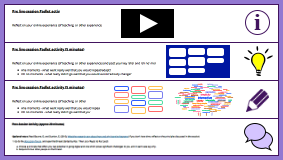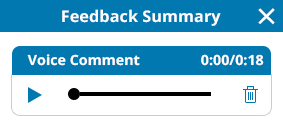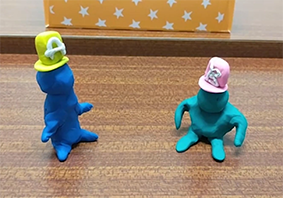This page provides guidance on designing for online and highly blended learning.
Successful online learning design is fundamentally different from traditional face-to-face teaching. It requires taking new approaches - moving away from content as the defining feature and instead focusing on designing learning activities for students. This offers the potential to move towards more interactive, engaging learning, and inquiry-based teaching where students have more opportunities for participation and engagement. Below we outline key recommendations for the design of units which include online elements.
Recommendations:

Organise Blackboard sites clearly and ensure navigation is clear and consistent within and across units. Set clear expectations about engagement at the beginning of the unit, and provide step by step instructions for tasks. Clearly define timelines for asynchronous tasks and times for live sessions. Provide regular updates and reminders.

Design your online learning components with student participation and interaction at the centre. Lecture-like experiences should be bite-sized (15-20 minutes), up-to-date and bounded by engaging tasks. Synchronous online lecture sessions should include engaging interactions, such as polls or chat throughout. Include engaging, meaningful, structured, accessible and scaffolded tasks for students, such as discussion, quizzes, prediction, problem-solving, group and pair work, writing questions, responses, and arguments. Use these prior to sessions (possibly in a flipped learning approach) to draw out existing knowledge and views, or post sessions to consolidate or build on the material discussed.

Asynchronous approaches, including content and activities students can engage with individually or collaboratively, can significantly benefit learning and complement online or in-person synchronous sessions. Activities might include listening to podcasts, watching narrated PowerPoints or videos, writing in a shared document or posting to a Padlet or discussion board. Asynchronous activity can help to provide inclusivity and flexibility, enabling students to access content at their own time and pace, and minimize connectivity issues. Synchronous sessions enable human connection with and between students, increasing engagement and building community. Record online live sessions to provide an asynchronous option for students who cannot attend.

When online, as with in person teaching, it is important to build human presence and connection in units, as well as a sense of belonging and relationships with students. Plan regular contact times with students to keep in touch and keep track of how they are learning. Take time to comment on and moderate discussions and other tasks. Ensure there is plenty of space for feedback to students on how they are doing, including generic feedback to the whole group, student self- and peer-assessment. Set clear boundaries as to when and how you are available.

Peer to peer interaction and group work are key in online learning, enabling students to develop their confidence and capability within a learning community. Group work can take advantage of the strengths of both in-person and online environments, for example collaborative online work in shared spaces, or in-person discussion or workshop type tasks. There are various ways to create well-structured, inclusive and engaging online learning activities. These can be fully synchronous, fully asynchronous, or a mix. Research tasks can include problem solving, analysing data from archives, uploading sources and critiquing them, and generating questions and hypotheses. These can build from individual and pair work to group work or vice versa. Outputs can range from collaboratively written documents, to videos, to student-led webinars. Consider how to mix groups and activities to promote inclusion.
Having aspects of their learning online may increase student anxiety and concerns around assessment. Help students demonstrate their learning to the best of their ability by providing opportunities for them to build the required skills, improve their work, and discuss their assessment brief and the marking criteria. Offer clear guidance, constructive formative feedback that relates to the marking criteria and links for further support, such as study skills. Ensure unit assessment deadlines across programmes are not too bunched, allowing students sufficient time to dedicate to each.
Ensure all teaching, learning and assessment methods are accessible to all students, so they can engage meaningfully with the curriculum, demonstrate their learning and achieve their full potential. Provide materials well in advance of sessions and recordings of live sessions afterwards. All online materials and tasks should use plain language, be small in size and checked for accessibility.

Review how the learning and assessment of a unit support students in building the skills they will need after their degrees and re-align assessment tasks accordingly. Create assessments that match learning activities and help build skills authentic to the subject. Assessment tasks should require students to meaningfully engage with the information available to them, eg analyse, critique or evaluate knowledge, or create. Wherever possible set coursework-type assessment i.e. assessment that can be completed over a period of time and then submitted.
The Digital Design course is an introduction to high-quality design for online and blended learning and is available as a self-study course. Follow this link to self-enroll on the course. If you don't have a university log in, contact the Digital Education Office.
The university has established an informal network of digital champions in order to help staff in all schools access discipline-relevant advice and examples to support them to move their teaching into online and blended formats.
Please contact us with any queries about design or implementation of these or other online activities, pedagogical challenges, and academic quality. These queries will be triaged and directed to an appropriate member of staff within the Digital Education Office, BILT or AQPO.